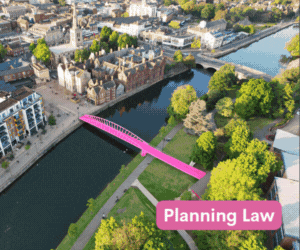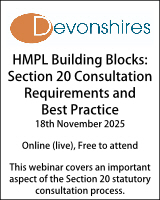High Court upholds council decision to revoke certificate of lawfulness in dispute over piling
The Royal Borough of Kensington and Chelsea's decision to revoke a certification of lawfulness after finding construction of a house had departed from its planning permission was lawful, the High Court has found.
- Details
In R (Mehta) v Royal Borough of Kensington and Chelsea [2024] EWHC 1986 (Admin), Deputy High Court Judge Karen Ridge dismissed all three grounds of challenge brought by the landowner.
The case revolved around the local authority's decision to revoke a Certificate of Lawful Proposed Use or Development (the CLOPUD or the certificate) on the basis that materially false information had been submitted with the application for the certificate.
The dispute originated from planning permission granted to the claimant in 2009 to construct a single-family dwelling comprising a two-storey basement with a single-storey at ground level.
That permission was not implemented, and a series of replacement and variation planning permissions were subsequently granted.
Ultimately, a variation application in 2013 saw alterations to the basement that set out a 1.1m exclusion zone between the walls of the underground basement and the wall of an adjacent building in order to provide sufficient space for the re-routing of a Thames Water pipe.
In May 2016, shortly before the expiration of the time limit for commencement of development, the previous landowner sought to commence development by boring holes and constructing three piles to be used in the basement construction.
Nothing happened for a number of years, and then, in April 2021, an application was made by the previous owner for a CLOPUD pursuant to section 192(1)(b) of the Town and Country Planning Act 1990 (as amended).
The CLOPUD certificate was issued in June 2021, confirming that the development approved had been lawfully implemented and could be carried out and completed.
However, in March 2022, the council received requests from local neighbours and a restaurant owner, who later became an interested party in the proceedings, asking the council to revoke the CLOPUD because it was claimed that the works were not in accordance with the permission.
According to the objectors, the distance between the edge of the piles and the rear wall of the restaurant was approximately 0.745m, encroaching on the 1.1m exclusion zone.
The council later concluded that the works that had been undertaken were not part of the development, leading the landowner to seek a legal challenge.
In their judicial review application, the claimant's first ground argued that the council had made an error of law by misinterpreting the planning permission as requiring the foundations of the building to be at least 1.1m from a nearby building.
Secondly, they argued that the council was wrong and irrational in concluding that the CLOPUD application was asserting that piled foundations were 1.1m from the adjoining building.
They were instead part of the walls in the way that all foundations are, and as such did not have to be directly under the wall, the claimant suggested.
Their third ground meanwhile contended the council was wrong and irrational to assert that the piles were not comprised in the development and were 'entirely redundant' and 'cannot be used to construct the building' when the undisputed engineers' drawing showed the approved development.
Ms Ridge dismissed all three grounds.
On the first ground, she concluded that it was "clear" that the council did not misinterpret the permission.
"The council had regard to the fact that the Permission required the external wall to be 1100mm away from the adjacent building and when granting the CLOPUD and subsequently revoking the CLOPUD, it looked at all information in light of this requirement," the judge said.
She added: "This aspect of the interpretation of the Permission was the basis on which the CLOPUD application was determined and it formed the starting point when assessing whether false information had been submitted."
Turning to the second ground, the judge found that the council had demonstrated in reports that it "correctly understood the relevant legal principles and the application of the law to the facts which was a matter of planning judgment for the council" – and that it was not irrational of the council to conclude that the misinformation was material to its decision to issue a certificate.
On the final ground, the judge said: "I am satisfied that the council was entitled to exercise its judgment on the utility of the piles in the way it did. That judgment does not in any way appear to be irrational."
She later added that the discretion to revoke was "reasonably exercised and was not irrational".
Jack Parker of Cornerstone Barristers appeared for the council.
The set said: "The case highlights the proper approach to be taken where a certificate of lawfulness is granted by reference to works of implementation which are subsequently discovered to be contrary to approved plans. It makes clear that a certificate may be liable to revocation where works of implementation are stated to be in accordance with approved plans and are subsequently determined not to be
"The case is a cautionary tale for those seeking to implement planning permissions shortly before the deadline for doing so. Not only must great care be given to ensuring that works accord with the permission but, as it was put by Mr Justice Holgate in Ocado, the developer “assumes a risk (which passes to or affects successors in title) that any certificate he obtains may be revoked if it turns out that materially inadequate or false information was provided on the application”."
Adam Carey
Senior Lawyer - Contracts & Commercial
Trust Solicitor (Employment & Contract Law)
Lawyer - Property
Contracts & Procurement Lawyer
Locums
Poll









































